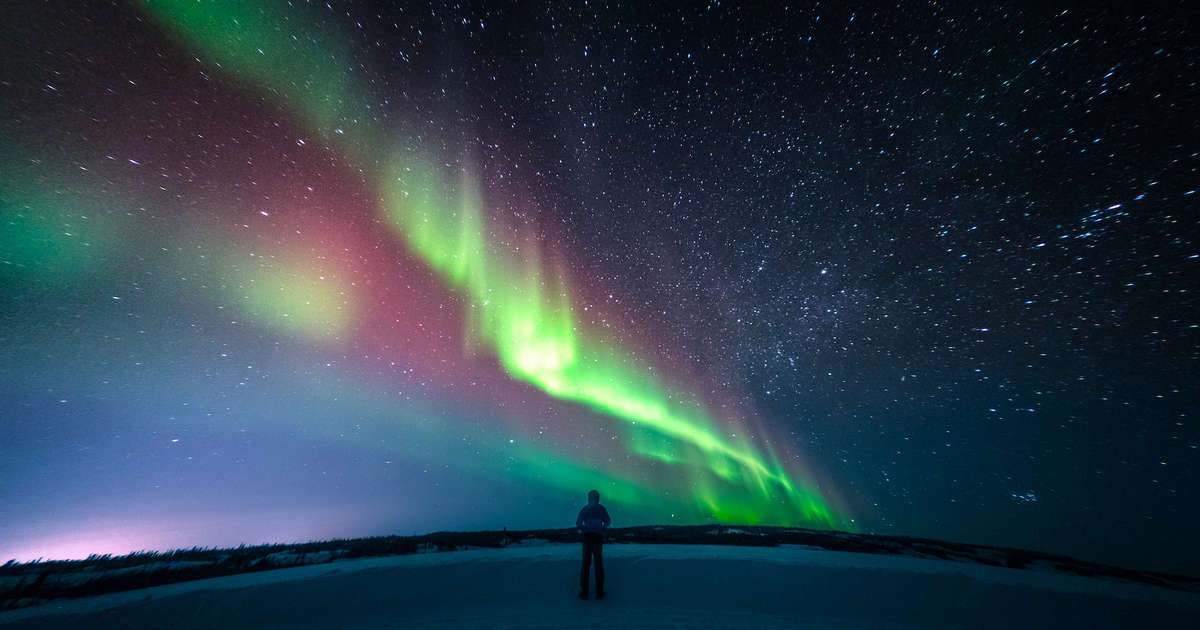
We quickly threw on warm clothes and headed outside just in time for the Aurora to become active. Just after 1am and after we had gone to bed with heavy snow falling and 100% cloud cover, the wind blew the clouds away and a very faint green glow appeared on the horizon. As much as it sucks dragging yourself out of your toasty warm bed after you’ve just drifted off to sleep and shocking yourself awake with blasts of cold Arctic air, our diligence paid off one evening.

And that’s exactly what we did we set our alarm clocks for every hour between 11pm and 2am. We spent nine nights in Iceland and after New Year’s Eve, all of the remainder of those nights spent staying on Icelandic farms where we could literally walk out our front door to check for Aurora sightings.

Viator hosted us on a Northern Lights Cruise with Special Tours and even though our cruise turned into a bus tour because of high winds and we didn’t see the Northern Lights, Special Tours graciously invited every single person on the tour to join them again any night within the next year. Most tour operators will even offer for you to join a tour the next evening if you don’t see the Northern Lights. Northern Lights tours are great because the tour operators have been chasing the Northern Lights for years and can find the best spots for potential viewing even when there is low hanging cloud cover. The Northern Lights are visible in cities like Reykjavik and Tromsø when they are at the strongest, but your best bet is to seek out spots in the Arctic countryside. That may mean you need to get out of the city to avoid light pollution. You have to put effort into seeing the Northern Lights.Īs we said before, it has to be dark to see the Northern Lights. The Northern Lights could appear for minutes or hours 5. You can consult with weather websites like WeatherSpark or The Weather Channel to find the averages for both temperature and precipitation when planning your trip. Precipitation means cloud cover and cloud cover makes spotting the Northern Lights extremely difficult or often impossible. Keep in mind that December isn’t typically the best month because popular Northern Lights destinations like Tromsø, Norway and Kiruna, Sweden have about 70% probability of precipitation each day during the month of December. Since it does need to be dark in order to see the Northern Lights in the sky, late August/September through the very beginning of April is the best time to go to a destination located in the aurora zone for a chance to see them. People just tend to associate Northern Lights with the cold since they are visible in the winter months, but we have seen them in August in very comfortable temperatures. But because they are only typically visible in the aurora zone between 65 ° and 72 ° North, they are not visible from April through August when the aurora zone experiences nearly 24 hours of daylight. The Northern Lights are actually active all year round. It doesn’t have to be cold to see the Northern Lights it just has to be dark.Īnother common misconception people have is that it has to be cold to see the Northern Lights. Northern Lights over a Sami lavvu in Abisko, Sweden 3.

We don’t want to be a Negative Nancy, but feel it’s our duty to tell you all these five 10 things no one ever tells you about the Northern Lights so you can set realistic expectations for an Aurora hunting trip. In the weeks leading up to our Iceland adventure and ever since, we’ve received tons of messages, comments, and emails from readers and followers about trips to see the Northern Lights. Wanting to ring in the New Year in Reykjavik because of the fireworks display of epic proportions we had heard about, the trip gave us another excuse to go Aurora hunting. I had seen them, but it wasn’t what I expected and I craved a more spectacular display. But it was cloudy, they were a white-gray color, and they danced for less than an hour. Finally, on our second night in Tromso (on the eve of my birthday) the Northern Lights finally made an appearance. We spent four nights watching for the elusive Aurora. At 78° North and just 600 miles from the North Pole, we were actually above the Aurora Belt. Then Tim and I traveled to Svalbard in March of 2012.


 0 kommentar(er)
0 kommentar(er)
